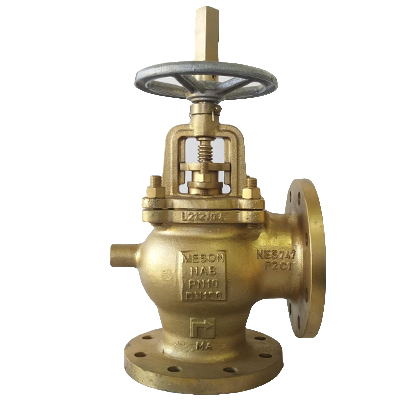-
Call Us
+91 8983836955 For Our Global Presence click here - Gut No - 324, MIDC Phase - II,
Chakan Industrial Area,
Village Bhamboli, Tal - Khed, Dist - Pune,
Maharashtra, INDIA - 410501

- July 27, 2023
- Ball valves Ships valves valve
Exploring 7 Essential Types of Valves Used on Ships
In the maritime sector, valves are essential to the efficient operation and safety of different onboard systems. In order to control the flow of liquids, gases, and other substances, ships rely on a wide variety of ship valves. This article will examine seven crucial types of valves that are frequently used on ships and their importance to the maritime industry.
Ball valves
Ball valves are frequently utilised on ships because of how straightforward and dependable they are. They are made up of a ball-shaped closure unit with a hole in the centre. The valve opens to let fluid or gas through when the hole lines up with the pipe’s axis. The valve shuts and the flow is stopped when the ball is rotated 90 degrees. Ball valves offer the least amount of flow resistance and are suited for rapid shut-off applications.

Globe valves
In marine applications where precise flow control is required, globe valves are essential. They feature a globe-shaped body and a moveable stopper (the disc) that may be lifted to enable full flow or lowered to completely halt the flow at the valve seat. They are perfect for controlling flow in pipelines and systems where pressure and flow direction need careful adjusting due to the precision control they offer.

Gate Valves
Gate valves are crucial for restricting and managing fluid flow on ships. They have a disc that slides up and down like a gate to either block or allow the passage of liquids or gases. These valves are not appropriate for fine flow control and are often utilized in completely open or fully closed states. When a tight shutdown and little pressure drop are required, gate valves are used.

Butterfly valves
Because of its portability and small weight, butterfly valves are used often in a variety of nautical applications. They are composed of a disc supported by a rod that pivots to regulate the flow. The valve is open when the disc is perpendicular to the pipe’s axis, and it is closed when it is parallel. For higher pipe sizes, butterfly valves provide a rapid and affordable alternative.

Check valves
Check valves, often referred to as non-return valves, only permit the movement of liquid or gas in one direction. They stop backflow, which is essential for protecting the integrity of the system and averting harm. Check valves are available in a variety of designs, including as swing, lift, and ball kinds, and they are essential for guaranteeing the effectiveness and safety of ship systems.

Pressure relief valves
Important parts that protect ships from overpressure situations are pressure relief valves. When a system’s excess pressure reaches a certain point, they automatically release it, averting possible catastrophes. These valves are installed in several ship systems, including boilers and fuel tanks, to guarantee the structural integrity of the ship and the safety of the crew.

Storm valve
A key element in marine engineering, the storm valve keeps seawater from entering the ship during inclement weather or severe waves. It serves as a one-way valve that lets water exit the ship’s deck drainage system but keeps it from coming back in. This crucial component aids in maintaining the ship’s stability, structural integrity, and buoyancy, assuring the safety of the ship and its crew under adverse weather situations.

Conclusion
Ship valves are crucial parts that enable the effective and secure operation of several systems on board. To ensure that ships operate efficiently when at sea, marine engineers, ship captains, and crew members must have a thorough understanding of the many types of valves and their purposes. Ships may cross the waters safely and reliably by using the proper valves in the correct applications.
We are a globally recognized valve specialist with a strong international presence. Renowned for our premium quality, we specialize in designing, manufacturing, and supplying a wide range of valves crafted from both Ferrous and Non-Ferrous materials. Our team of experienced engineers is well-equipped to provide comprehensive valve automation solutions, along with dedicated support for installation and commissioning.
